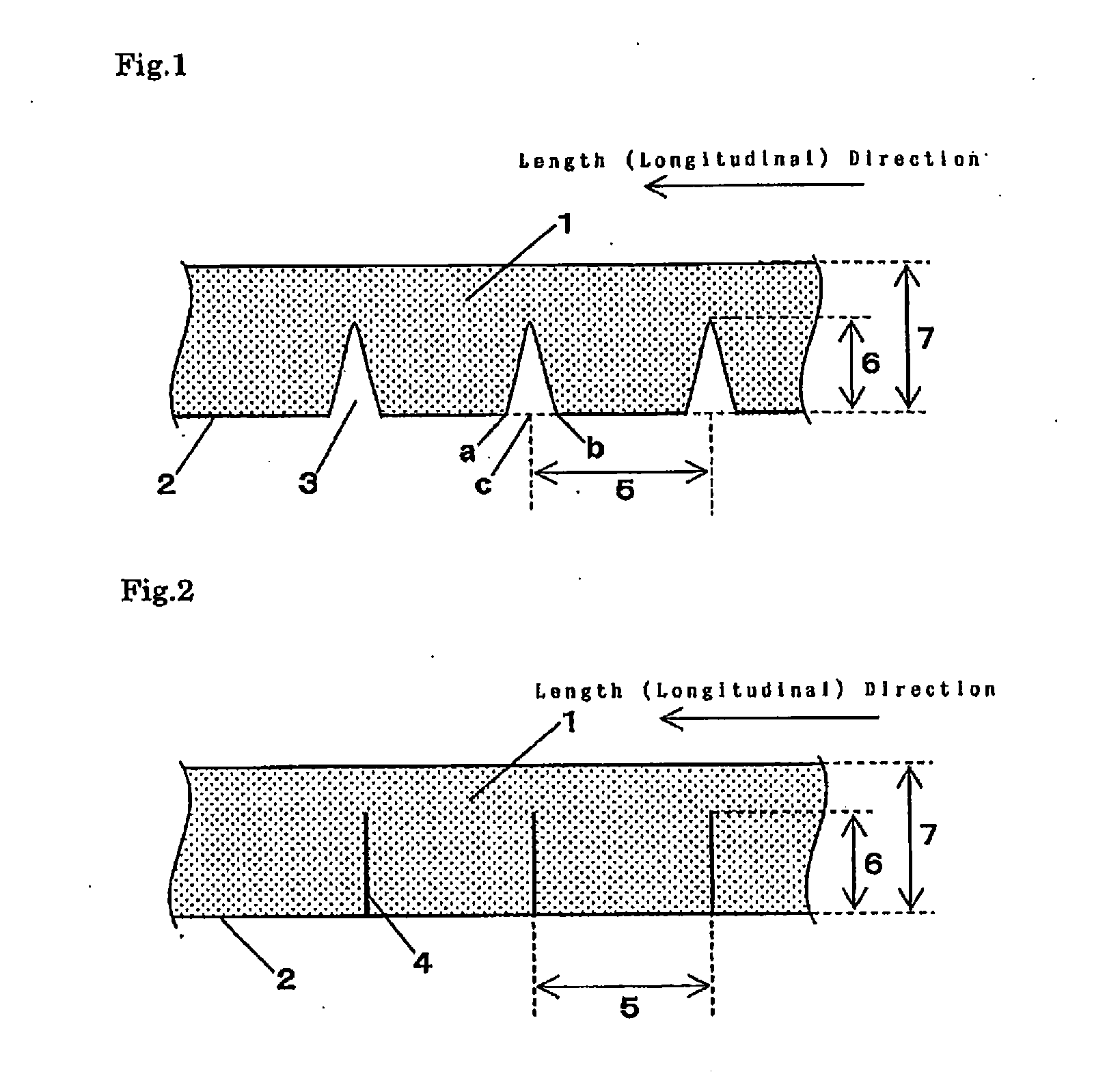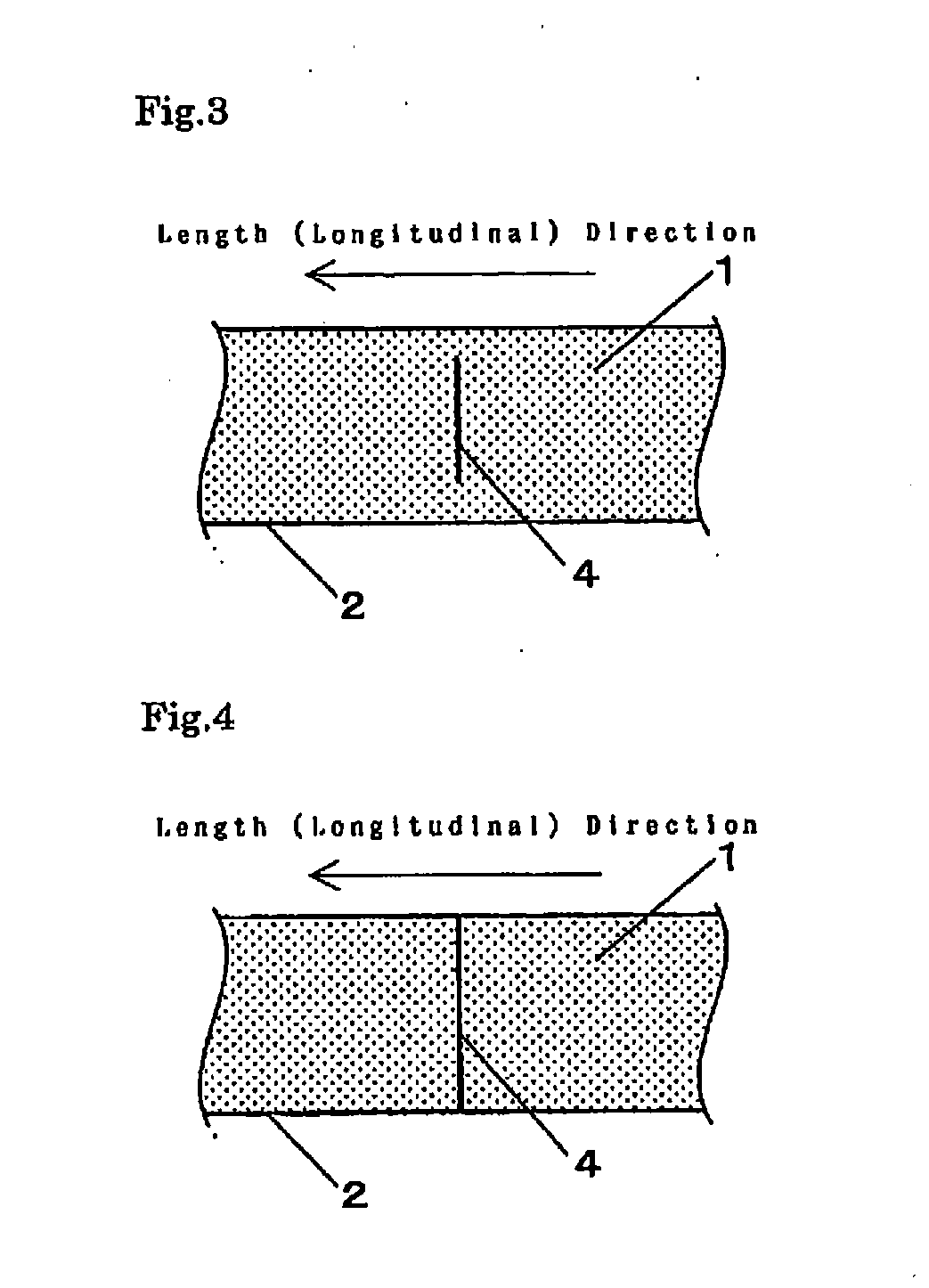Double-sided pressure-sensitive adhesive tape and method for attaching the same, and release liner
a technology of pressure-sensitive adhesive tape and release liner, which is applied in the direction of film/foil adhesives, bandages, transportation and packaging, etc., can solve the problems of poor working efficiency, and achieve the effect of reducing release workability, facilitating processability, and high inhibition
- Summary
- Abstract
- Description
- Claims
- Application Information
AI Technical Summary
Benefits of technology
Problems solved by technology
Method used
Image
Examples
example 1
[0121]In the release liner of the high-adhesion acrylic foam tape (trade name: “HYPERJOINT A4012”), slits were arranged using a rotary cutter as shown in FIG. 20. The slits were arranged in both edges in the width direction of the release liner in all area in the length direction (the slits were continuously arranged in the length direction of the release liner).
[0122]Dimensions and the like of the slits arranged in the release liner are shown below.
[0123]Width of Adhesive Tape (Width of Release Liner): 10 mm
[0124]Length of Slit in One Edge: 3 mm (the same length in both edges)
[0125]Distance between Leading Ends of Slits Opposing Each Other: 4 mm
[0126]Distance between Slits Adjacent to Each Other in Length Direction: 3 mm
[0127]Angle between Slit and Width Direction of Release Liner: 0°
example 2
[0131]In the release liner of the high-adhesion acrylic foam tape (trade name: “HYPERJOINT A4012”), slits were arranged using a rotary cutter as shown in FIG. 21. The slits were arranged in both the edges in the width direction of the release liner so as to continuously repeat the area with the slits and the area without the slits alternately in the length direction of the release liner.
[0132]Dimensions and the like of the slits arranged in the release liner are shown below.
[0133]Width of Adhesive Tape (width of release liner): 15 mm
[0134]Length of Slit in One Edge: 5 mm (the same length in both edges)
[0135]Distance between Leading Ends of Slits Opposing Each Other: 5 mm
[0136]Distance between Slits Adjacent to Each Other in Length Direction: 10 mm
[0137]Angle between Slit and Width Direction of Release Liner: 0°
[0138]Length of Area with Slits: 110 mm
[0139]Length of Area without Slits: 520 mm
PUM
| Property | Measurement | Unit |
|---|---|---|
| distance | aaaaa | aaaaa |
| distance | aaaaa | aaaaa |
| angle | aaaaa | aaaaa |
Abstract
Description
Claims
Application Information
 Login to View More
Login to View More - R&D
- Intellectual Property
- Life Sciences
- Materials
- Tech Scout
- Unparalleled Data Quality
- Higher Quality Content
- 60% Fewer Hallucinations
Browse by: Latest US Patents, China's latest patents, Technical Efficacy Thesaurus, Application Domain, Technology Topic, Popular Technical Reports.
© 2025 PatSnap. All rights reserved.Legal|Privacy policy|Modern Slavery Act Transparency Statement|Sitemap|About US| Contact US: help@patsnap.com



